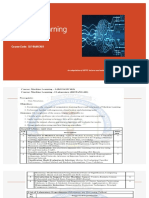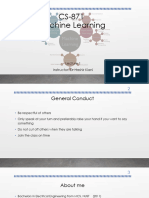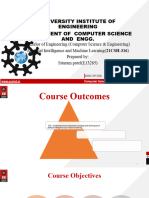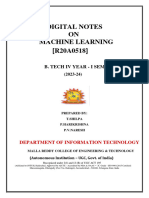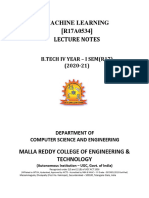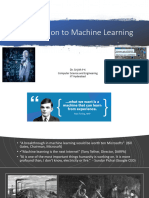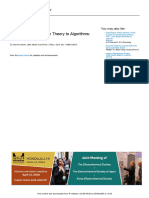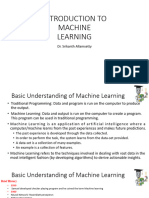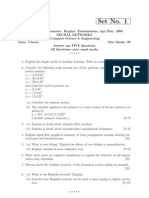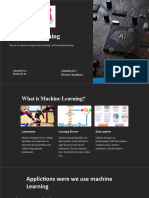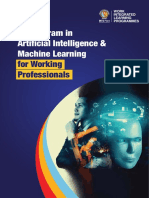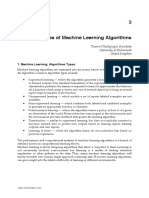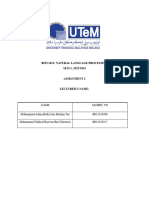0% found this document useful (0 votes)
90 views20 pagesNotes Unit 1-3 Part-I
The document outlines a syllabus for a Machine Learning course taught by Dr. Rahul Dubey, covering topics such as the introduction to machine learning, model optimization, supervised and unsupervised learning algorithms, and ensemble learners. It includes practical applications using Python and emphasizes the importance of ethical considerations and explainable AI. Additionally, it provides a historical context for machine learning and highlights key milestones in the field.
Uploaded by
Mayank PurohitCopyright
© © All Rights Reserved
We take content rights seriously. If you suspect this is your content, claim it here.
Available Formats
Download as PDF, TXT or read online on Scribd
0% found this document useful (0 votes)
90 views20 pagesNotes Unit 1-3 Part-I
The document outlines a syllabus for a Machine Learning course taught by Dr. Rahul Dubey, covering topics such as the introduction to machine learning, model optimization, supervised and unsupervised learning algorithms, and ensemble learners. It includes practical applications using Python and emphasizes the importance of ethical considerations and explainable AI. Additionally, it provides a historical context for machine learning and highlights key milestones in the field.
Uploaded by
Mayank PurohitCopyright
© © All Rights Reserved
We take content rights seriously. If you suspect this is your content, claim it here.
Available Formats
Download as PDF, TXT or read online on Scribd
/ 20
